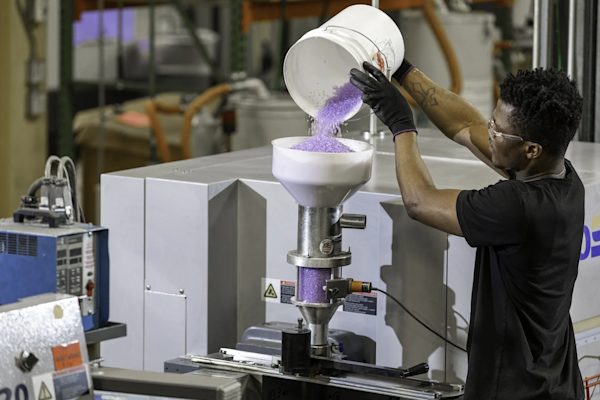One factor that effectively illustrates the evolution and maturation of 3D printing is the incredibly wide range of scales on which it is happening. From parts that are so small they are barely visible to the renewed push for large-format 3D printing, the sector truly covers all shapes and sizes. “There are 3D printers that are the size of an entire room,” says Protolabs’ Grant Fisher. “There are 3D printers that are printing bridges and houses.”
The technology naturally lends itself to micro printing. “There’s geometries and quantities that only 3D printing can do at that scale,” says Eric Utley at Protolabs. One of the main industries where this is being utilized is the medical sector, particularly in dental care. “There’s a lot of companies investing millions in dental printing very small, precise, FDAcertified” adds DIVE’s Adam Hecht. And advancements in this investment-rich sector then tend to make their way across the industry. “So much innovation is found there that it’s now translating to other small parts that utilize similar foundational technologies, such as vision systems,” says Hecht. “We’ve seen a lot more companies in recent years specializing in the micro world, just because some of the technologies can get such small, fine details. You just can’t machine parts that small. You can’t mold parts that small. So I would say that that’s certainly happening.”
At the other end of the scale, Hecht expects a significant push for large-format 3D printing, for applications such as tooling or furniture, helped along by new, larger systems such as robotic pellet systems. These systems offer greater design freedom, complexity, and production flexibility. They can also eliminate, or at least reduce, the substantial amounts of waste associated with machining large parts, and drastically cut down the labor needed to manually fabricate large structures from many smaller parts. “It’s a really interesting next step for various industries, and it opens a new door to possibilities for larger pieces—and we’re seeing a lot more companies are jumping on that wave as well.”
In addition to furniture, boats are another example where 3D printing can significantly save on manual labor costs and material waste. Large-format printing is also being utilized for art and marketing purposes, and, of course, there’s the aforementioned houses. “Printing housing in concrete seems to be growing quite a bit,” says Utley.
For more insights on the 3D printing industry including market data and future trends, download a copy of our 3D Printing Trend Report 2024.







